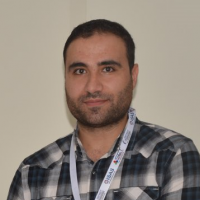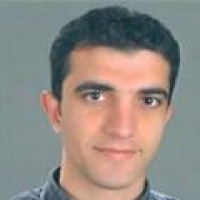BITLIS EREN UNIVERSITY
JOURNAL OF SCIENCE
WRITING RULES
First Submission Format
Manuscripts should be prepared electronically using the Word template file provided by Bitlis Eren University Journal of Science and sent in
Word format via the DergiPark system. This journal uses blind peer review process, which means that both the reviewer and author identities are concealed from the reviewers, and vice versa, throughout the review process. To facilitate this, authors’ information should not be given in the main manuscript in order not to give away their identity. According to the 2019 TR-index criteria, all authors should include the internationally valid "ORCID" information in their accepted manuscript. All text, including the abstract and reference list, should be prepared in single-column and 1.5-line spacing format for the first submission.
Similarity index: The manuscripts sent to the journal are scanned with the Ithenticate plagiarism program. The overall similarity score should not exceed 15% after subtracting references, addresses, proper names, chemical compound names and taxon names in biology (scientific names). Each similarity rate should not exceed 3%. The pre-control process for the articles uploaded to the journal will be evaluated according to these similarity scores. In addition, authors must comply with other ethical rules such as Plagiarism, Fabrication, Distortion or Falsification and Duplication. Responsibility for these matters belongs to the author. A study published as a full text in the proceedings book of any congress or symposium is not accepted in the journal. This journal only accepts the full papers of the study published as an abstract in the abstract book.
Referee Process
The manuscripts submitted to the journal are reviewed by the editors in terms of compliance with the overall suitability of the manuscript to the journal, template and similarity score. Manuscripts found to be suitable for refereeing by the editors are then sent to at least 2 reviewers. Reviewers make recommendations for the article to be accepted, major correction, minor correction or rejection. If the manuscript has received a major revision or minor revision by a reviewer, the author should make the corrections suggested by the reviewers for the article and upload the revised version of the manuscript to the system within 1 month. Revised versions of manuscripts may or may not be sent to reviewers if it is minor revision, depending on whether the reviewer requested to see the revised version. By default, reviewers who request major revisions will be sent the revised manuscript. Changes made in line with the recommendations of the reviewers must be stated or highlighted in the article. To indicate these changes, the author should use word tracking in MS Word. After the corresponding author edits the manuscript according to the reviewer's suggestions and upload it to the Journal, the manuscript will be sent to the reviewers for further revision. If the manuscript is accepted by two reviewers, this article is entitled to be published in the journal and listed according to the date of acceptance. Articles can only be accepted for publication by an academic editor. The academic editor can select from the following options: Accept in current form, accept with minor revisions, reject and decline resubmission, reject but encourage resubmission, ask author for revision, or ask for an additional reviewer. This journal uses a blind peer-review process, and therefore, the identities of both the reviewer and the author are hidden from each other during the review process.
Manuscript Language
Please write your text in good English. British or American English usage is accepted, however not a mixture of the two.
Title
Title should be concise, understandable and suitable for the content. It should be written in Times New Roman, font size 15, bold, first letters capitalized and centered.
Author Names and Affiliation
Author names and addresses should not be written in the first submission of the manuscript due to blind peer-review process. However, in order for accepted manuscripts to be prepared for the publication process, author information should be added in the printing format and the following rules should be observed:
1) The names of the authors under the title should be written without abbreviations. The first letter in name should be written in capital letter, while the surname should be written in all capital letters. Both name and surname should be written in 12 font size and aligned to the left.
2) A comma should be placed between the names of the authors and numbers should be used as superscripts to specify affiliation (1, 2, 3, etc.). If the authors are from the same affiliation, then the same superscript should me marked on each author’s name.
3) The name of the corresponding author must me clearly indicated with a superscript asterisk (*).
4) The full addresses of the authors should be written in small letters (initial letters are capitalized), left-justified, italic and 10-point below the names after a space, and the e-mail address of the corresponding author should be indicated with the symbol (*) in the lower left corner of the first page.
Abstract and Keywords
The abstract of the manuscript should be written in 10 points, with a maximum of 300 words. Keywords, consisting of at least 3, at most 6 words, should be written in 10 points below the abstract (to the left in print format) after a space.
Subsections
Subsections should be consecutively numbered 1. (then 1.1., 1.2., 1.3., ...), 2., 3., etc., left justified and bold characters. However, the abstract is not included in section numbering. In subsection titles, only the first letter of each word should be capitalized. For example, “1. Introduction 2. Material and Methods 3. Results 4. Discussion 5. Conclusions” and “2.1. Data Collection 2.2. Modeling”. The subsections of the manuscript should be written in 12-point Times Roman (11-point in print format).
Text Formatting
All text, including the abstract and reference list, should be justified and prepared in 1.5-line spacing (1-line in print format). The first paragraph immediately after the subheadings should not be indented and there must be no extra space between paragraphs. All articles should be written in Times New Roman font. Manuscripts are recommended to be submitted in Microsoft Word or Latex format. For the text, use a regular font, 12 point Times Roman (11-point in print format), and add line numbers to the left.
Introduction
In this section, sufficient literature review about the study should be given, the aims of the study and its importance in the literature should be emphasized. Detailed literature review and summary of results should be avoided.
Material and Method
The method should be given in detail and clearly in terms of reproducibility of the study. The methods used should be supported by previously published references. Changes that contribute to the method related to the study should be described in detail.
Findings and Discussion
The results obtained should be included in this section, and supported by figures and tables if necessary. The findings can be compared with the relevant literature if necessary. Findings should be clear and concise enough. In the discussion section, the remarkable results of the study should be highlighted and excessive citation and literature discussion should be avoided.
Conclusion and Recommendations
In this section, the aim of the study and its remarkable results should be given briefly, in a concrete way. Suggestions and opinions that are desired to be conveyed to the readers about the results of the study can be stated.
Acknowledgment
If it is a study within the scope of; Person(s), institutions and organizations who helped in the study should be thanked for their help and support.
References
References must be in IEEE format. You can find detailed information about the IEEE format
here.
Click to create your own bibliography online according to IEEE format. An example bibliography is given below:
[1] U. J. Gelinas, Jr., S. G. Sutton, and J. Fedorowicz, Business Processes and Information Technology. Cincinnati: South-Western/Thomson Learning, 2004.
[2] L. Liu and H. Miao, "A specification-based approach to testing polymorphic attributes," in Formal Methods and Software Engineering: Proc. of the 6th Int. Conf. on Formal Engineering Methods, ICFEM 2004, Seattle, WA, USA, November 8-12, 2004, J. Davies, W. Schulte, M. Barnett, Eds. Berlin: Springer, 2004. pp. 306-19.
[3] T. J. van Weert and R. K. Munro, Eds., Informatics and the Digital Society: Social, ethical and cognitive issues: IFIP TC3/WG3.1&3.2 Open Conf.e on Social, Ethical and Cognitive Issues of Informatics and ICT, July 22-26, 2002, Dortmund, Germany. Boston: Kluwer Academic, 2003.
[4] G. Liu, K. Y. Lee, and H. F. Jordan, "TDM and TWDM de Bruijn networks and shufflenets for optical communications," IEEE Trans. Comp., vol. 46, pp. 695-701, June 1997.
[5] J. R. Beveridge and E. M. Riseman, "How easy is matching 2D line models using local search?" IEEE Transactions on Pattern Analysis and Machine Intelligence, vol. 19, pp. 564-579, June 1997.
[6] M. Lehmann, Data Access in Workflow Management Systems. Berlin: Aka, 2006.
[7] J. Geralds, "Sega Ends Production of Dreamcast," vnunet.com, para. 2, Jan. 31, 2001. [Online]. Available: http://nl1.vnunet.com/news/1116995. [Accessed: Sept. 12, 2004].
[8] European Telecommunications Standards Institute, “Digital Video Broadcasting (DVB): Implementation guidelines for DVB terrestrial services; transmission aspects,” European Telecommunications Standards Institute, ETSI TR-101-190, 1997. [Online]. Available: http://www.etsi.org. [Accessed: Aug. 17, 1998].
[9] A. Rezi and M. Allam, "Techniques in array processing by means of transformations, " in Control and Dynamic Systems, Vol. 69, Multidemsional Systems, C. T. Leondes, Ed. San Diego: Academic Press, 1995, pp. 133-180.
[10] O. B. R. Strimpel, "Computer graphics," in McGraw-Hill Encyclopedia of Science and Technology, 8th ed., Vol. 4. New York: McGraw-Hill, 1997, pp. 279-283.
[11] W.-K. Chen, Linear Networks and Systems. Belmont, CA: Wadsworth, 1993, pp. 123-135.
[12] K. E. Elliott and C.M. Greene, "A local adaptive protocol," Argonne National Laboratory, Argonne, France, Tech. Rep. 916-1010-BB, 1997.
Figures
Illustration such as photographs, pictures, drawings and graphics should be given as figures. Pictures, figures and graphics must be clear and suitable for offset printing technique. Figures (color and black and white photographs, black and white drawings, maps) should be given in the text. Figures should not be larger than 16x20 cm. Pictures and photos must be at least 600 dpi resolution. All figures should be numbered sequentially throughout the article (Figure 1., Figure 2. etc.), including titles and explanations. Periods or commas should not be placed at the end of the explanations. Figure captions should be centered under the figure and in 10 points. A caption should comprise a brief title and an explanation of the illustration. When using shapes, be attentive to use the Shape Description style. Additionally, there should be a 5 nk space between the figure and its caption
Tables
Please submit tables as editable text and not as images. Tables should be placed next to the relevant text in the article. Number tables consecutively according to their appearance in the text (Table 1., Table 2., etc.). Table titles should be at the top of the table and centered in 10 points. A caption should comprise a brief title and an explanation of the table. Please avoid using vertical rules and shading in table cells. There should be a 5 nk space between the table and its heading
Equations and units
When using equations, they should be numbered sequentially. The equation numbers should be enclosed by parentheses and located at the right-hand side of the page. In addition, equations should be prepared with Word or other equation editors and should not be in picture format. The unit systems used in the manuscripts should be compatible with the SI unit systems.
MATTERS TO CONSIDER IN THE FINAL CORRECTIONS OF MANUSCRİPTS ACCEPTED FOR PUBLICATION
• Main text should be written in two-column format.
• All margins (right, left, top and bottom) should be 2.5 cm and line spacing should be single,
• Abstracts should be 10 pt, main text 11 pt,
• Article titles are 15 points, bold, centered and only the first letters of each word are capitalized,
• Subheadings should be 11 points, bold and, only the first letter of each word should be capitalized.
• Please click here for publication format.
After the articles are published, only the corresponding authors will be sent their articles in PDF format. The relevant edition of the journal will also be sent to the authors.
PUBLICATION RULES
Original research articles and technical notes in the fields of Engineering and Basic Sciences are published in the Journal of Science (International Refereed Journal), which is published four times a year (March, June, September and December) by Bitlis Eren University Graduate Institute.
The language of the manuscripts to be published in the journal is English. The similarity score of the articles should not exceed 15%. Articles that do not comply with the spelling rules are sent back to the author to be corrected before being sent to the reviewers. Therefore, the writing rules of the journal should be taken into account. Manuscripts should not exceed 20 pages, including figures and tables. The manuscripts sent to the journal for publication are evaluated by at least two reviewers. In order for the articles to be published in the journal, minor revision or acceptance opinion must be given by the reviewers. The Editorial Board of the Journal decides whether to accept the manuscripts for publication by considering the reviewers’ reports (after the evaluations of the two reviewers are received).
Manuscripts to be published in the journal must be within the rules of scientific ethics. All authors in the article must sign the Copyright Form stating that they have given the publication rights of their work to Bitlis Eren University Journal of Science. Though the publication is accepted without submitting this form, it will not be published. All legal responsibilities arising from the content of the articles to be published in the journal and legal responsibilities that may arise regarding copyrights belong entirely to the authors.
Bitlis Eren University Journal of Science Editor
Bitlis Eren University Graduate Institute
Merkez Kampüs, 13000 BİTLİS
If you are considering submitting an article to our journal, we recommend that you review the journal's publication policy on the "About" page of our journal. Authors must register with Dergipark before submitting to the journal. After signing up, you can start the shipping process via the Login link. Readers are recommended to sign up for the broadcast notification service. This can be done from the Registration link at the top of the journal entry page. As stated in the journal's privacy statement, the identity information and e-mail addresses of the authors will not be used for any other purposes. We recommend research libraries to include this journal in their electronic journal collection. It should be noted that the open-code publication system of the journal may also be suitable for use in other journals where academics using the library participate in the publication process. Detailed information on Open Journal Systems can be obtained from the
Public Knowledge Project page. Authors can publish their works published in this journal before and after publication, on their personal websites or in institutional archives, by referencing this journal in accordance with librarianship rules. This magazine; Adopting the principle that providing scientific research free of charge to the public will increase the global sharing of knowledge, it provides instant open access to its content. Names and e-mail addresses on this journal site will be used only for the stated purposes of this journal; It will not be made available for any other purpose or use by other people.
Copy editing stage
The copy-editing phase aims to improve the fluency, clarity, grammatical structure, word choice and format of the article. This is the last opportunity for the author to make significant changes to the article; because in the next step, only string and format corrections will be made. Since the file to be copied is in MS Word or .rtf file format, it can be easily edited as a word processing document. Two approaches to fixes are suggested here. The first is to use the "Track Changes" feature of the MS Word program. However, when this path is selected, the author, copy editor, and editor must have access to the program. The second proposed system is software independent and is reproduced here with permission from the Harvard Educational Review. The journal editor can modify these instructions to make them more suitable for the journal's own operation.
Copy editing systems
1. When the "Track Changes" feature of MS Word and the "Track Changes" feature under Tools in the Menu bar are enabled, the copy editor can make the changes it deems necessary. Text added to the article is shown in a different color, while removed text or parts are shown in the margin as strikethrough, colored or deleted. The copy editor can write whatever they want to ask the author or editor in square brackets. The document passing through the copy editor is uploaded to the system to be forwarded to the editor. The editor reviews the text and presents it to the author's opinion. The editor and the author approve the corrections they see fit and return them to the normal format, they can change it if they wish, or they can make new additions or deletions in different colors. If there are questions in the text in square brackets, the author and editor should answer these questions in the relevant brackets. After reviewing by the author and editor, the copy editor reviews the text one last time and approves the changes, and the text is ready for page editing and typesetting.
2. To electronically edit a manuscript draft using the Harvard Educational Review method, follow the instructions below: Responding to suggested changes: If you approve of the proposed changes, change the relevant text from bold to regular font. If you do not approve the proposed changes, re-enter the original text and make it bold. Making additions and subtractions: Mark the part you added in bold font. Mark the text to be deleted with square brackets as below [text to be deleted]. If you are deleting a sentence or more, add a note in the relevant field. For example [2 sentences deleted: text to be deleted]. Answering the questions directed to the author: Do not touch the questions directed to the author, do not delete them, leave them in bold in the text. Add your answer as [Author's note:] to the end of the questions directed to the author. For example, [Author's note: Methodology discussion expanded as you suggested]. Commenting: Use the Comment section to describe changes and major revisions to article editing. For example, [Comment: Paragraph above moved from page 5 to page 7]. Note: When giving page numbers, use the page numbers from the hard copy you received. Page numbers may change during electronic transactions.
An example for electronic editing
First copy editor file: The journal's copy editor edits the article in terms of fluency, clarity, grammar, word choice and format, and then adds questions to be sent to the author at necessary points. The copy editor uploads this first edited article to the journal's web page. It also sends a note to the author to review the article. Author edit file: The author should consider the views of the editors who followed the article before making major changes to the structure or layout of the first edited article. The author should approve the changes made during the first editing if he/she deems it appropriate, and reject all the questions asked if he/she does not deem it appropriate. When the author completes this process, he/she should change the file name from AuthornameQA.doc to AuthornameQAR.doc (eg LeeQAR.doc instead of LeeQA.doc) and upload it to the web page. Final copy edit: The copy editor will approve the changes made by the author and prepare the final copy by integrating the answers with the text. The copy editor uploads the final copy to the journal web page and prompts the layout editor to complete the formatting.






